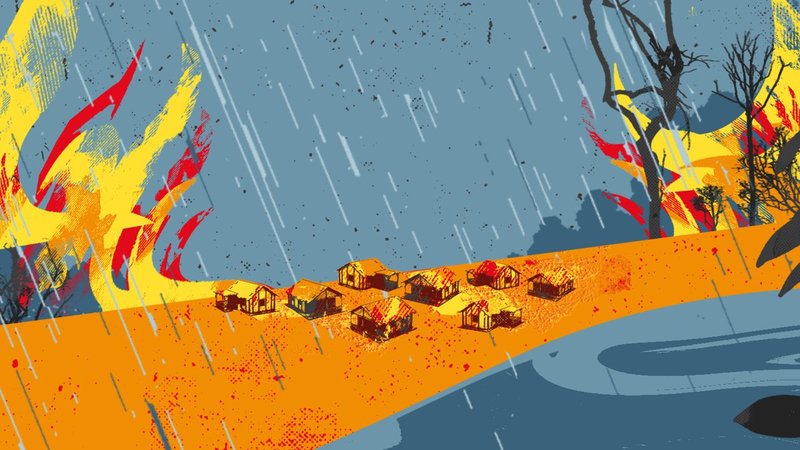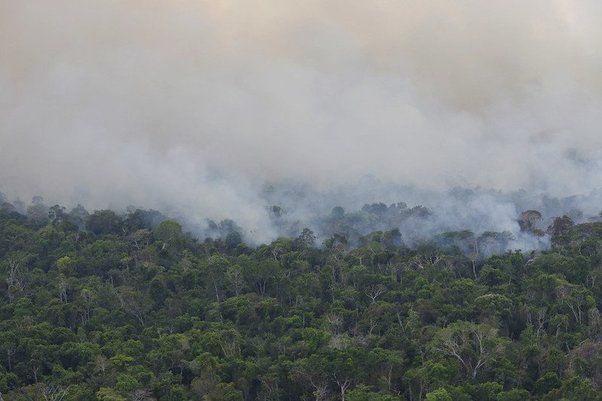As the impacts of the climate crisis become more severe, world leaders must ensure that those most responsible for the crisis provide financial support to help the communities most impacted by it – the communities who are least responsible for global carbon emissions
Now, thanks to the tireless work of global frontline leaders, loss and damage – which refers to compensation intended to address destruction related to climate impacts - is finally on the agenda at COP27.
More than a decade since climate movements began to advocate for financial transfers to the Global South, this could be a significant step in the right direction. However, if no real progress is made at COP27, under-resourced frontline communities will continue to lose homes, livelihoods and families to a climate crisis that is largely driven by wealthy countries.

What are climate reparations? And what is loss and damage compensation?
Climate reparations refer to compensation from the world’s largest emitters to developing countries bearing the worst and most disproportionate impacts of climate change.
These reparations would require accountability from the countries and private corporations who have historically contributed the most greenhouse gas emissions, in order to address the serious damage that climate change inflicts on low-income countries.
Climate reparations are an attempt to right historical injustices as well as to prevent them from occurring again in the future. This year, the Intergovernmental Panel on Climate Change (IPCC) explicitly acknowledged the connection between colonialism and climate change.
It’s important to note that loss and damage compensation, as it’s being referred to in international climate negotiations, differs from climate reparations as it excludes liability or compensation for past harm and only refers to payments for current unavoidable climate impacts.
There is no agreement yet over what counts as “loss and damage” in climate disasters – which can include anything from damaged infrastructure to the destruction of cultural assets like burial grounds.
Why is there a need for climate reparations?
Up to 3.6 billion people live in areas of “high vulnerability” to climate change, according to IPCC estimates. This means that 45% of the world population will continue to be increasingly impacted by floods, droughts or extreme weather in the coming decades.
A tragic and recent example, in August of this year, record-breaking, climate-change driven floods in Pakistan killed nearly 1,500 people and displaced more than 30 million.
The vast majority of those most impacted by climate change are in west, central and east Africa, south Asia, Central and South America, small island developing states and the Arctic, according to the IPCC.
These regions – which have some of the lowest per capita carbon emissions in the world – are now suffering the worst effects of a crisis that has been driven and exacerbated by the looting of their lands for wealth and natural resources.
Making matters worse, countries often need to take out loans to rebuild after climate disasters, forcing them to prioritise debt payments over protecting their citizens. Lower-income countries spend five times their climate adaptation budgets on external debt payments.
For example, Mozambique, after devastating cyclones in 2019, was forced to take on a $118 million loan from the International Monetary Fund. Yet, an average person in Mozambique contributes 73.5 times fewer carbon emissions than in the US.
As the wealthy US and European countries combined contribute the most climate change-inducing carbon emissions (24.5% and 16.3%, respectively), Mozambicans, like other frontline communities, are burdened by millions of dollars in debts and are bearing the brunt of the climate crisis.
Despite years of calls for loss and damage compensation, formal discussions have been resisted by wealthy nations at every previous COP. At last year’s COP, the establishment of a funding pot was rejected and nearly completely removed from the final agreement, the Glasgow Climate Pact.
Only a small number of wealthy countries have so far stepped up with “loss and damage” funding for climate-related disasters.
On the first day of this year’s COP, loss and damage was finally added to the agenda under the finance item; but it excludes crucial discussions on liability from developed countries and compensation.
It is therefore vital that this year’s COP negotiators finally agree to:
- Establish a transparent fund to provide developing countries with new financial support to address loss and damage
- Ensure the fund is financed with sufficient and consistent contributions from the heaviest polluting nations, in line with need and demand
- Provide debt forgiveness and financial assistance in the form of grants rather than loans
If these outcomes are achieved from this year's COP, our world will finally be a step closer to attaining climate justice for the Global South.
Global Witness will continue to advocate for global climate justice – follow us to keep up to date with our latest COP news and campaign activities.


